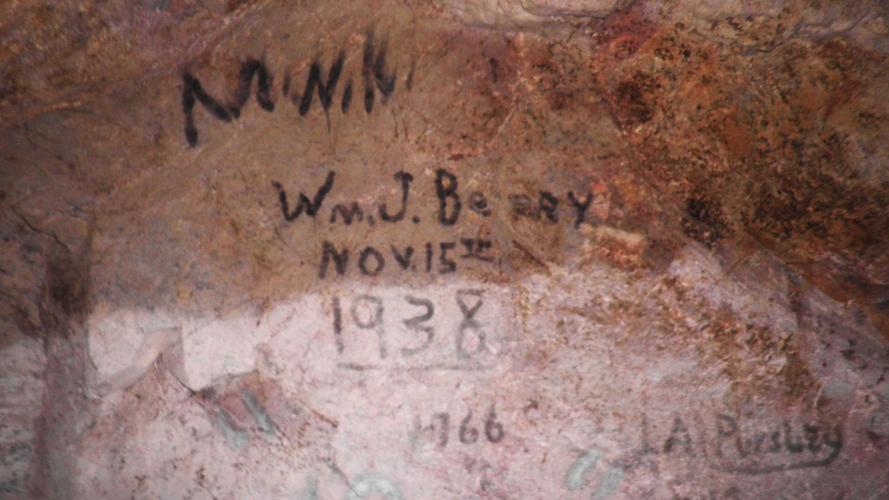As with many localities in Arizona, miners viewed the Chiricahua Mountains as a potential mineral investment.
Some sources claim that even the Apache chief Cochise had a secret gold mining operation on the Chiricahua Reservation during its brief existence in the early 1870s.
By the end of the decade, the California mining district was established. Although mining was prevalent in parts of the Chiricahua Mountains in the late 19th and into parts of the 20th centuries, it never was a truly profitable venture. Unlike the rich copper ore body discovered in Bisbee in the Mule Mountains southwest of the Chiricahua Mountains, for the most part the Chiricahuas contain weak mineralization.
Mineral content in the Chiricahuas includes lead oxides found near the surface encased in Paleozoic limestone. It also included marble deposits located in its northwest region that were mined during the early 20th century.
The California mining district in the Chiricahuas included several towns that developed over time and were the result of mining. Their longevity differed due to logistics and the market price of the metal that was being mined.
They included the ephemeral Chiricahua City, followed by Galeyville and later the town of Paradise, which experienced its largest population of 300 by 1904. The rise and fall of Galeyville and Hilltop were connected to the value of silver.
The town of Portal, still in existence today, served as a gateway to the mining operations around Paradise.
The California mining district comprised the majority of land situated south of Apache Pass and north of Texas Canyon. It was formed on Sept. 7, 1878, as a result of a meeting held at Leroy’s Camp on Silver Creek by miners declaring their adherence to the U.S. Mining Law of May 10, 1872.
The arrival of the Southern Pacific Railroad at the old Butterfield Stage Station in San Simon on Sept. 4, 1880, brought about heightened mining interest in the Chiricahua Mountains, which lay 26 miles south.
The first recorded mining claim in the Chiricahuas was the Hidden Treasure, worked by Jack Dunn in early 1881. It later became part of the Hilltop Mine.
The area produced a high-grade ore that was handpicked and shipped by mule for processing to such railroad points as Willcox and Lordsburg, N.M.
The California mining district continued to produce small amounts of ore into the 1980s with the El Tigre Mine (1941-1982). This locality produced 2,200-2,300 short tons of ore, including 11 ounces of gold, 2,662 ounces of silver and 73 pounds of copper.
El Tigre Mine’s host rock is composed of limestone, shale and volcanic rocks.
The King of Lead Mine adjacent to the northeastern boundary of the Chiricahua National Monument was noted for its lead and zinc deposits.
The mine, a lead, gold, zinc, copper and silver mine discovered in 1900 by John C. Riggs, was an active producer of metals through the early 1980s with more than 350 tons of ore processed.
The total production for the California mining district between 1902 and 1954 included 28,000 short tons of ore, which equaled $1,072,000 with 176 short tons of copper, 290 ounces of gold, 4,035 short tons of lead, 117,000 ounces of silver and 582 short tons of zinc.
The California mining district’s history of production was over 1.75 million short tons; however, when compared to the 8 billion pounds of copper extracted from the Warren mining district in Bisbee, it may be construed as less significant.





